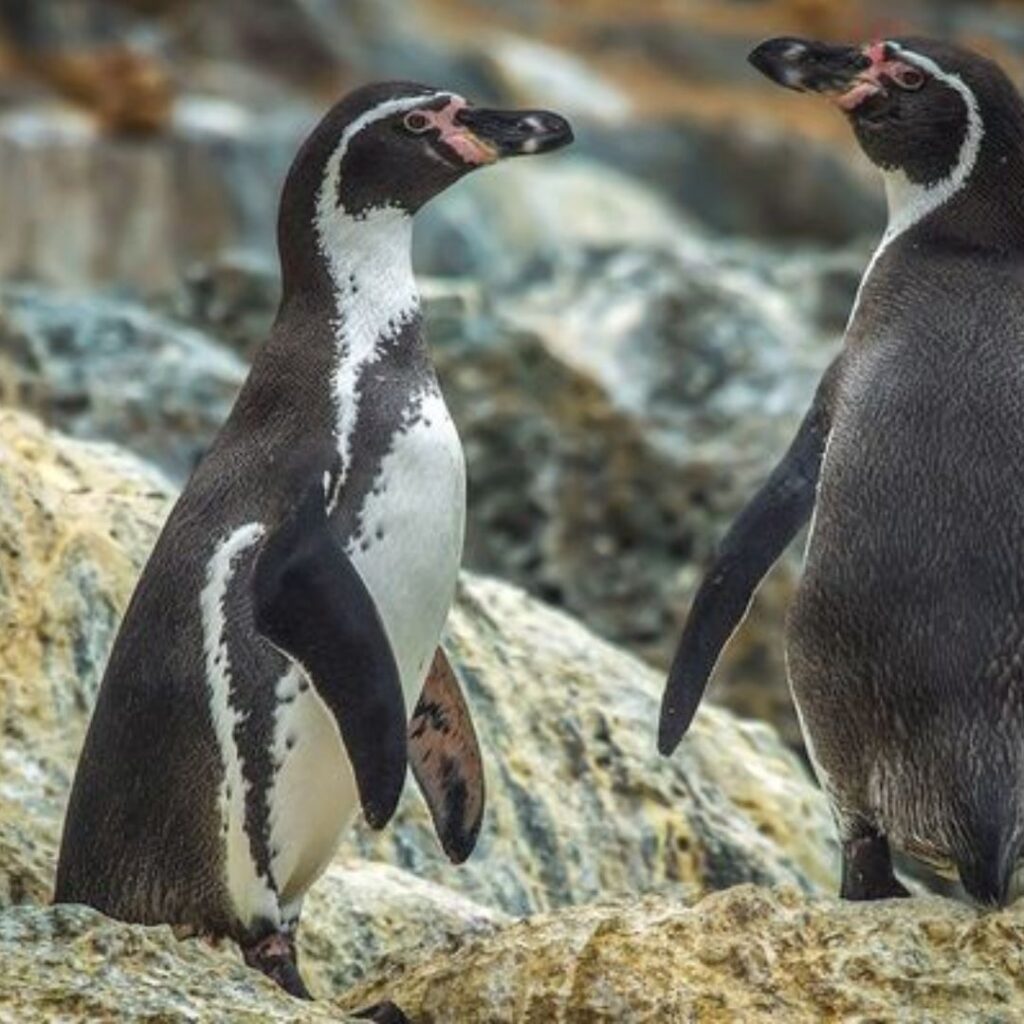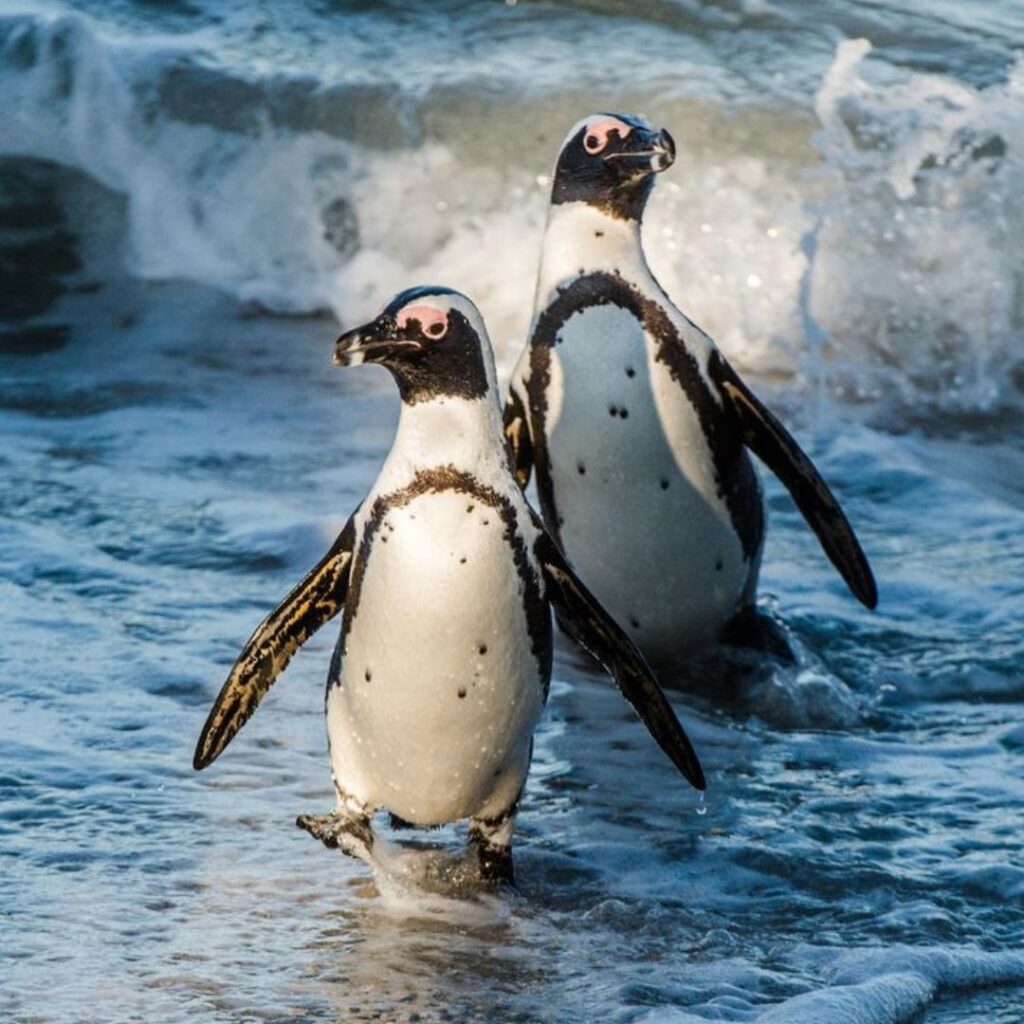
Humboldt penguins capture our hearts with their distinctive appearance and charming behaviors. These South American natives have adapted to unique environments and face various challenges in the wild. Let’s dive into everything you need to know about these fascinating birds.
Also Read: The Humboldt Penguin: 11 Facts You Won’t Believe!
Humboldt Penguin Diet
Humboldt penguins are skilled hunters of the sea. They feast on a variety of small marine creatures, including:
1. Anchovies
2. Sardines
3. Herring
4. Squid
5. Krill
These penguins hunt by diving into the cold waters of the Humboldt Current. They can reach depths of up to 150 feet (45 meters) and stay underwater for several minutes. Their diet changes seasonally based on what’s available, showing their adaptability to changing ocean conditions.

Humboldt Penguin Habitat
Humboldt penguins live along the western coast of South America. Their range stretches from Peru to Chile, covering about 4,000 kilometers (2,500 miles) of coastline. These birds thrive in a unique environment that includes:
1. Rocky shores and cliffs
2. Small coastal islands
3. Areas near the cold Humboldt Current
4. Regions adjacent to the Atacama Desert
They nest in burrows dug into guano (bird droppings) deposits or in natural caves and crevices. This habitat provides protection from both the hot sun and potential predators.

Humboldt Penguin Lifespan
In the wild, Humboldt penguins typically live between 15 to 20 years. However, some individuals in captivity have reached ages of 30 years or more. Factors affecting their lifespan include:
1. Food availability
2. Predation pressure
3. Environmental conditions
4. Human-related threats like pollution and habitat loss
With proper care and protection, these resilient birds can enjoy long, healthy lives.

Humboldt Penguin Fun Facts
1. They have pink patches of bare skin that help regulate body temperature.
2. Humboldt penguins are monogamous, often mating for life.
3. They can swim at speeds up to 30 miles per hour (48 km/h).
4. These penguins have a third eyelid that acts like built-in sunglasses.
5. They communicate with a variety of calls, including a distinctive braying sound.

Humboldt Penguin Predators
Despite their agility in water, Humboldt penguins face threats from various predators:
In the ocean:
1. Sharks
2. Sea lions
3. Orcas (killer whales)
On land:
1. Foxes
2. Dogs (both feral and domestic)
3. Birds of prey (for eggs and chicks)
Surprisingly, vampire bats also pose a threat to nesting penguins in some areas.

Are Humboldt Penguins Endangered?
Yes, Humboldt penguins are classified as Vulnerable on the IUCN Red List. Their population faces several challenges:
1. Overfishing reduces their food supply.
2. Climate change alters ocean temperatures and currents.
3. Coastal development destroys nesting habitats.
4. Oil spills and marine pollution harm their health.
5. Introduced predators threaten eggs and chicks.
Conservation efforts are underway to protect these penguins. These include establishing marine protected areas, regulating fishing practices, and conducting research to better understand their needs.
Also Read: Where Do Humboldt Penguins Live?

How You Can Help Humboldt Penguins
1. Support sustainable seafood choices to protect their food sources.
2. Reduce plastic use to keep oceans clean.
3. Learn about and support penguin conservation organizations.
4. Spread awareness about the challenges Humboldt penguins face.
5. If visiting their habitats, choose responsible ecotourism options.
Humboldt penguins play a crucial role in their marine ecosystems. They serve as indicators of ocean health and contribute to nutrient cycling through their guano deposits. By protecting these charismatic birds, we safeguard the broader health of coastal and marine environments.
From their unique diet to their surprising habitats, Humboldt penguins continue to amaze us. Their ability to thrive in challenging environments showcases nature’s adaptability. However, they now need our help to ensure their survival in a changing world. By understanding and appreciating these remarkable birds, we can take steps to protect them and the ecosystems they call home.
Pingback: Where Do Magellanic Penguins Live?